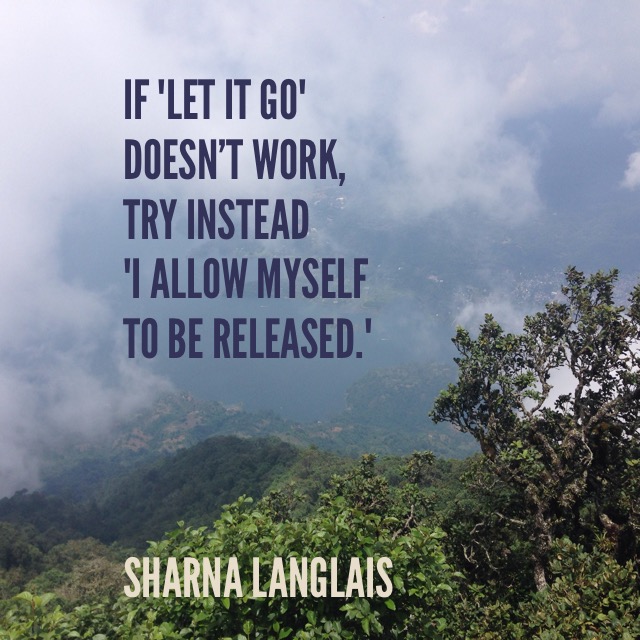We’ve probably all seen the Zen proverb “let go or be dragged,” and maybe even groaned a bit as we resonated with the concept.
Yet how many times do we still find ourselves hanging on for dear life to a person, belief, situation or even past event, as we are dragged unhappily through the muck, picking up scrapes, bruises and breaks along the way?
I recently found myself in such a scenario, holding on so very tightly to the outcome of a situation, that I deeply wished had turned out differently. While I trust that everything works out as it should and try very hard to live in the present moment, I was deeply hurt and saddened by how these events unfolded.
Knowing that I needed to move on, I found myself in the uncomfortable, yet very necessary and appropriate, predicament of having to “let (it) go.”
So I started with writing about it, seeking to understand why I was so attached to the situation turning out differently. Then I turned to processing it through my body, going running and singing a silent mantra to myself: “I let it go, I let it go, I let it go.” Next, I meditated and imagined the cords connecting me to the situation being cut, un-hooked, burned and just about every severing scenario possible.
And finally, I took some space (after much-needed venting), respectfully and lovingly unplugging from dialogue about what had happened.
And while I gained some great insight from these exercises, I still found myself clasping hard to the past. The more I tried to force my hands to ungrasp, energetically prying each finger away from the situation, just a few minutes later, I’d be right back in the uncomfortable emotion of feeling compelled into perseverating about what had happened.
At my wit’s end, I was blessed with an epiphany, realizing quite perfectly, that all my efforts to let go had been so focused on the past as well as other people. I was also nearing the point of obsession, thinking I needed to “do” something to be able to let it go. Even the words themselves “let it go” are active, masculine and quite literally a command.
And so I sat with how to turn this idea around, putting the focus back on myself, and what I wanted from the situation. I realized that, quite simply, I wanted to be released from my attachment to what had happened. This emphasis was on the feminine principle, more centered in receptivity and in “allowing” release to occur. This was about stepping back and quite literally not “doing” anything at all.
And so my new mantra became: “I allow myself to be released.” Compared to “let it go” this new statement was a breath of fresh air.
I don’t know about you, but every time I say, “I allow myself to be released,” my body instantly opens up, as I give myself permission to be—not requiring myself to do anything at all.
In this place of being, I can surrender and open up to freedom. No longer am I actively trying to ungrip, but I’m simply allowing myself to be let go as well, freeing up my time and energy for other pursuits.
“Let it go” is a wonderful mantra (as little ones countrywide have let us know, a la Frozen).
And there are certainly times in our lives when we need this active principle to sever ties, move on, and symbolically and literally “let go.” And yet there are other times, when we are best served to focus on ourselves, on our own needs and freedom, and allow ourselves to experience the beauty of being released.
Relephant Read:
Are You Hooked?
Letting Go in Relationships: A Buddhist’s View of Attachment.
Author: Sharna Langlais
Apprentice Editor: Melissa Scavetta/Editor: Travis May
Photo: Author’s own









Read 2 comments and reply